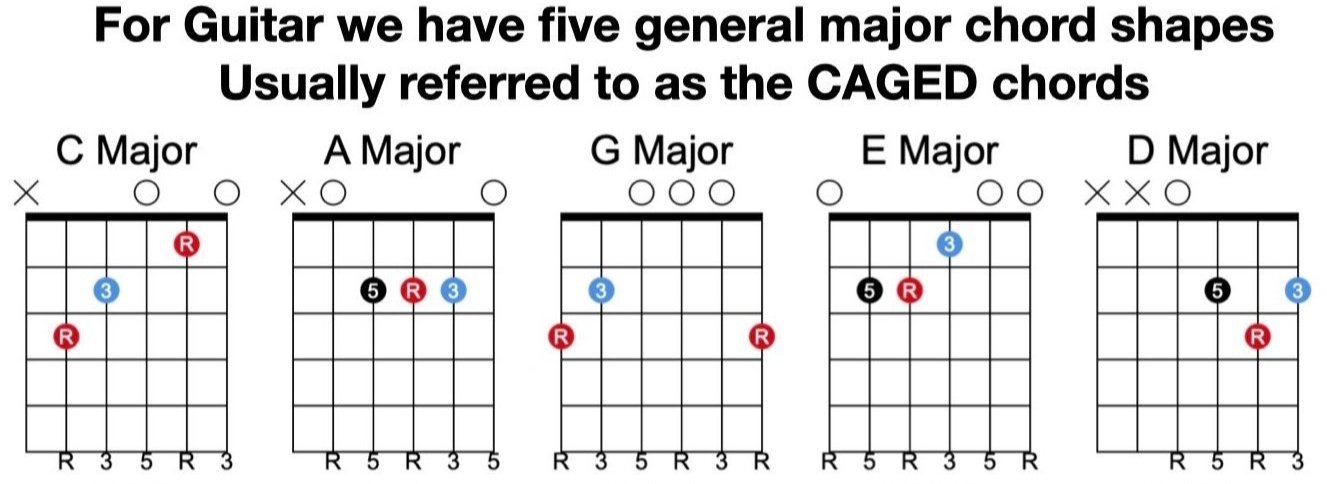4. Guitar Major Chords and Chord Inversions
So we started our conversation on how music works using the piano as an example because, well it is easier to see how music is laid out on the piano. For stringed instruments, it is not so straightforward and one reason many guitar players and songwriters who use the guitar shy away from learning music theory. But, understanding just the basics of how chords are constructed (spelled) and how diatonic major and minor chords are related can open up a new world for a songwriter regardless which instrument they use for writing.
In this Blog I want to tie together what we have learned about the basics of music using the piano and connect these concepts to the guitar. We will approach the guitar by looking at what are probably the first five chords shapes you learned.
How is the Guitar Tuned?
The guitar standard tuning is in Perfect 4th interval between each string, expect for interval between the 3rd (G-string) and the 2nd (B-string) which is a major 3 interval. See the diagram below that shows the guitar neck and the corresponding notes on the piano.
On the piano, it is easy to see that each string is separated by a perfect 4th (except the G and B strings as noted above). We can see that the interval from the E string to the A string is a Perfect 4th (5 semitones), and the A string to the D string is a Perfect 4th etc.
When we learn to tune the guitar, we are taught to press down the 6th (E) string at the 5th fret to make an A note for tuning the open 5th (A) string. So, the default musical interval between two open strings on the guitar or noted at the same fret is a perfect 4th.
Cowboy Chords
The first chords you learn on the guitar are referred to in a few different ways: open string chords, first position chords, or Cowboy chords. The diagram below shows these chords in a specific order of CAGED for reasons to be explained below.
The guitar chords shown above are common chords that we learn first but also represent how music theory works on the guitar.
Let’s talk about the Cowboy Chords. As we have been discussing in the previous two blogs, chords are built by stacking major and minor 3rds intervals. In the chord diagrams above we see the root, 3rd, and the 5th for each chord shape. Pay close attention to the “X” which means you do not play these strings for the best sounding chord (or because the open string is not part of the basic chord triad). We see that for the guitar (and other string instruments too), one or more of the chord tones may be repeated in a chord shape.
To form a C-chord (using the C-shape) on a guitar, we press down the 5th string at the third fret for the root (C) note, the 4th string at the second fret for the major 3rd (E) note, and we leave the 3rd string open for the 5th (G) note to completed the C triad of C E G. So the major 3rd is one string higher and one fret back. This is true between every string except between the 3rd and 2nd strings as noted previously.
If we look at the A-shape, we note the 4th string at the second fret for the 5th (E) note and the 3rd string also at the second fret for the root (A) note. We did not discuss this before, but the interval between a 5th note and the next higher root note is a Perfect 4th interval. To complete the basic A triad, we note the 2nd string at the second fret for the major 3rd of the chord (C#). Review these diagrams and pick up your guitar and identify where the chord tones are for each chord shape.
For the C-shape, we have root notes on the 5th and 2nd strings and the major 3 notes on the 4th and first strings. If you look at the G-shape, notice that open 2nd, 3rd, and 4th strings make a G triad in the second inversion. That is, the lowest chord tone is the 5th note where the major 3rd note is the highest, and the root note in the middle. By examining the A-shape where we see the notes played on the 2nd, 3rd, and 4th strings are a second inversion of an A triad or the same as the open strings for G just moved up one whole step from a G triad to an A triad. If you closely examine the C-shape and the D-shape chords you will see a similar relationship on the 3rd, 2nd, and 1st strings where the 5th, root, and major 3rd chord tones are played.
Learning the CAGED system on the guitar can be very helpful in understanding relationship between the chord shapes when you begin to look for a different inversion of a chord or chord voicing to enhance the melody of a song. This is one or 10 years’ worth of learning for the guitar but is one key way to get the most of the instrument.
Chord Inversions
Well, with the discussion above you can see how chord inversions are found within common chord shapes. Also, by moving any chord shape up the neck we move into different chords. For instance, one of the first chord shapes we learn to move is the E-shape up one fret (one semitone) to form an F Major chord rooted on the 6th string at the first fret. Move the E-shape up another whole step to place the root note on the 6th string at the third fret and you have a G Major chord. Each of the CAGED shapes can be moved up the neck to make different chords with some adjustments with the finger placement and which strings are played. In other words, a C chord may be formed at the fifth fret using the A-shape in the second inversion or the G-shape in the first inversion. if you move up to the eight fret and use the E-shape to make a C-chord, you have more chord voicing options. The diagram slide-show below shows various CAGED chord shapes with the chord tones noted
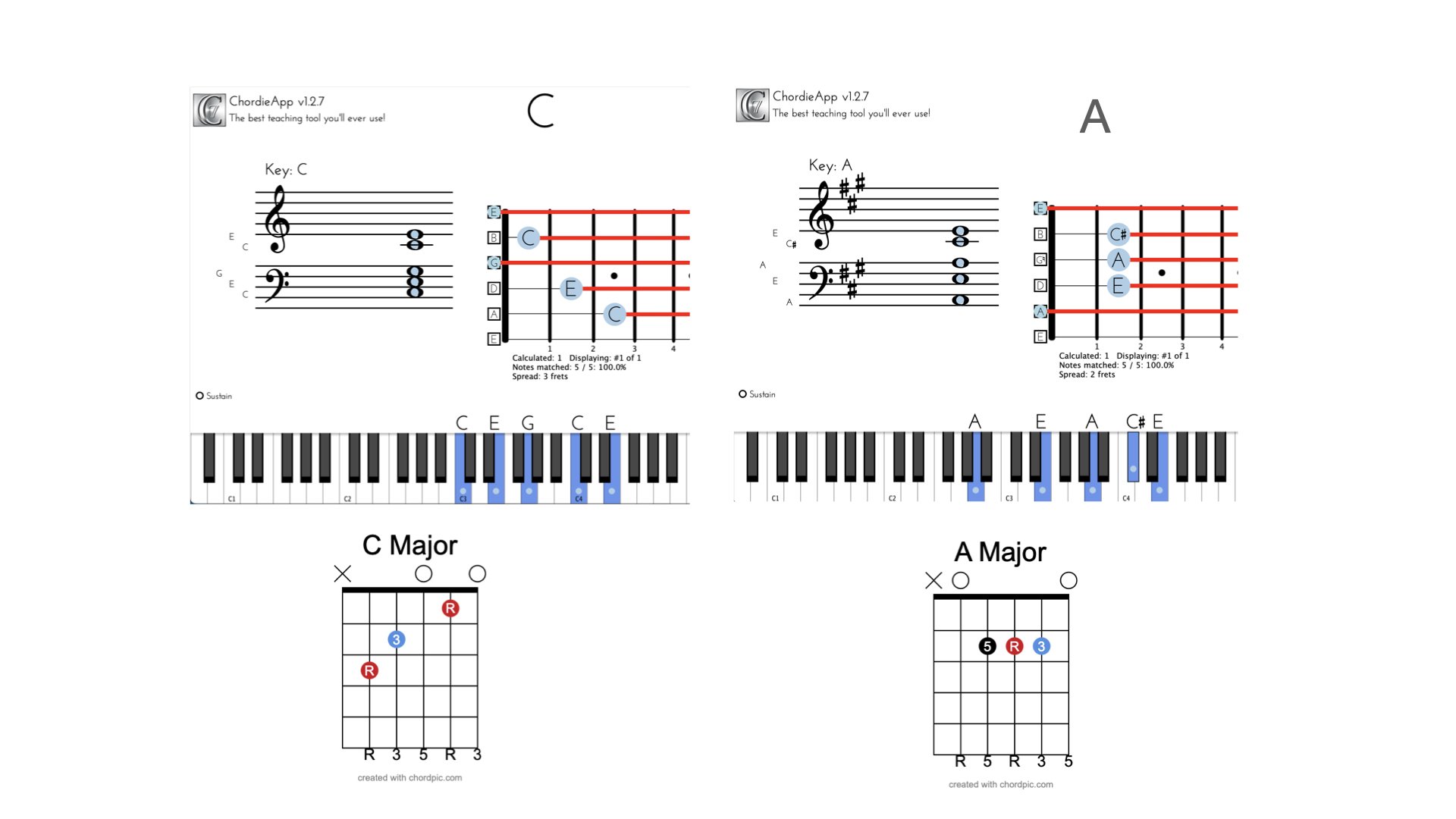

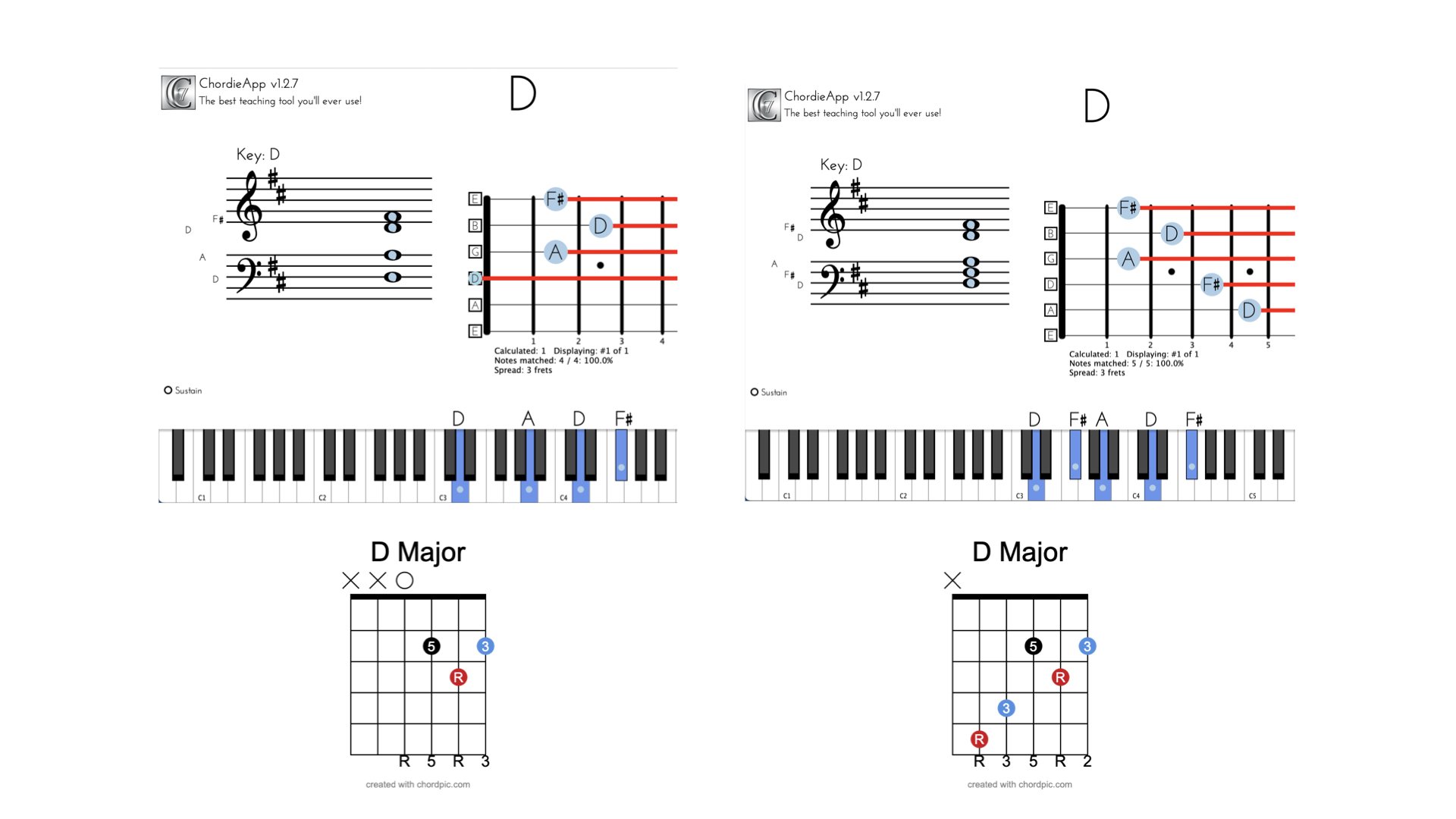

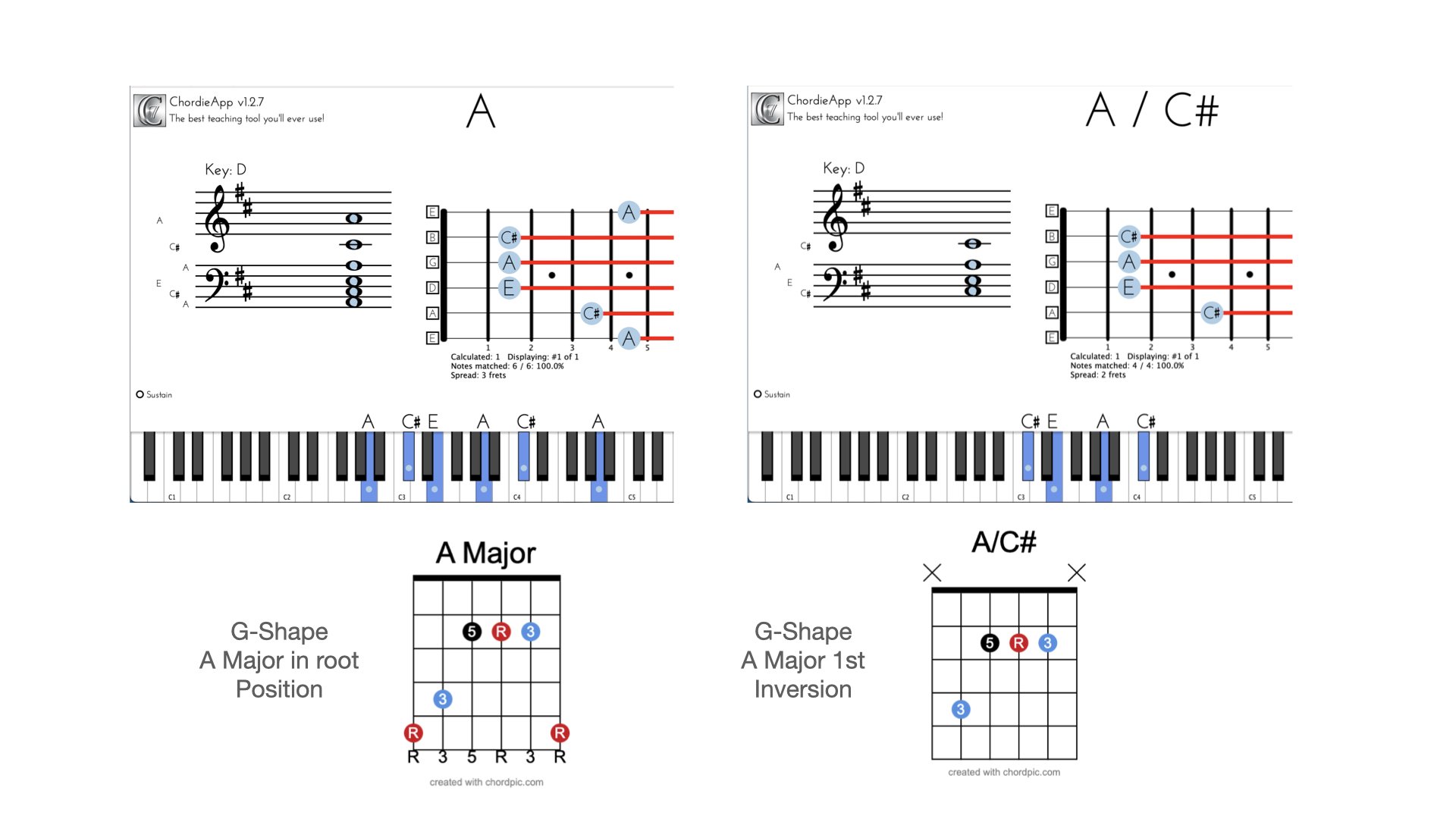
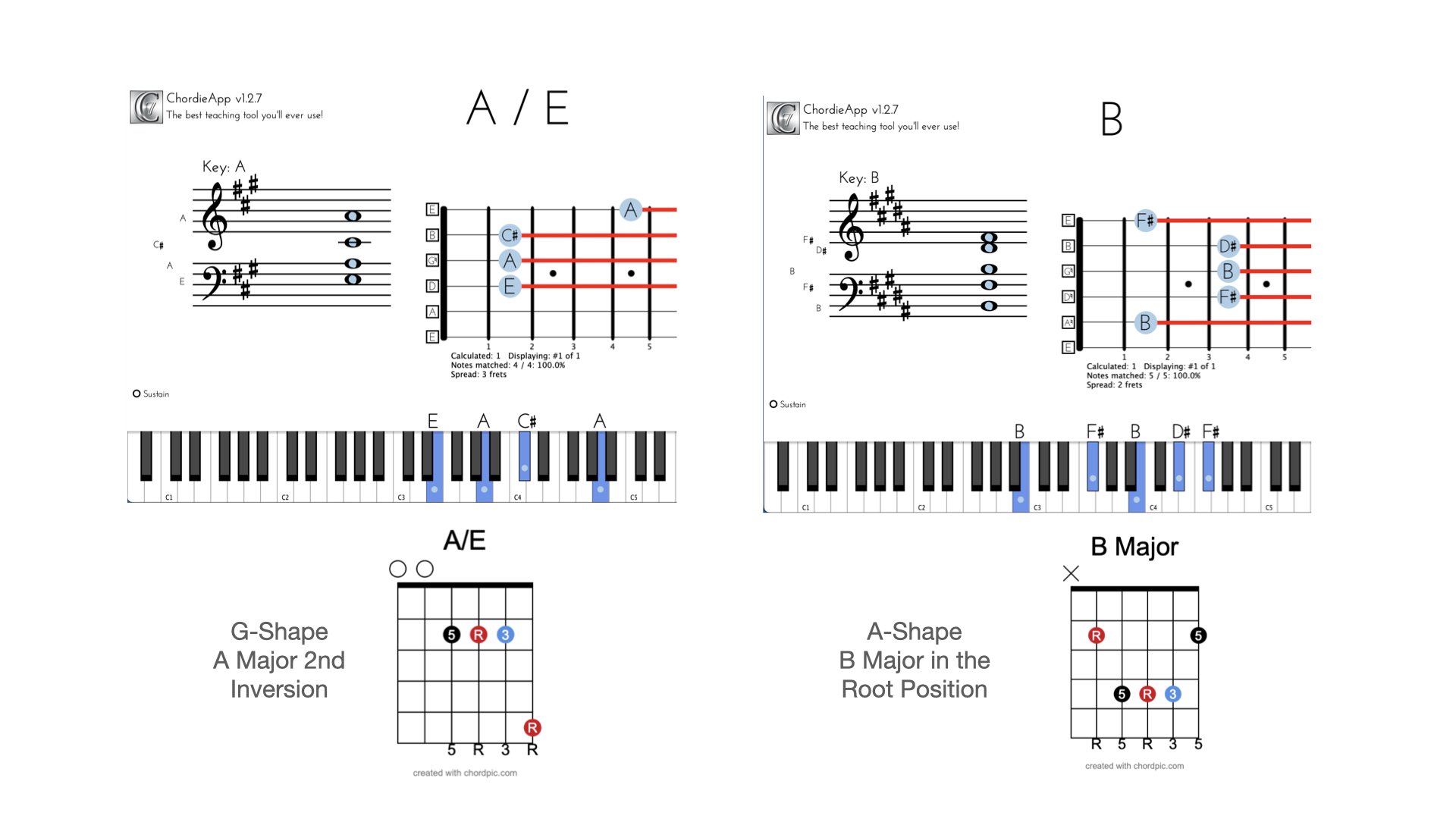
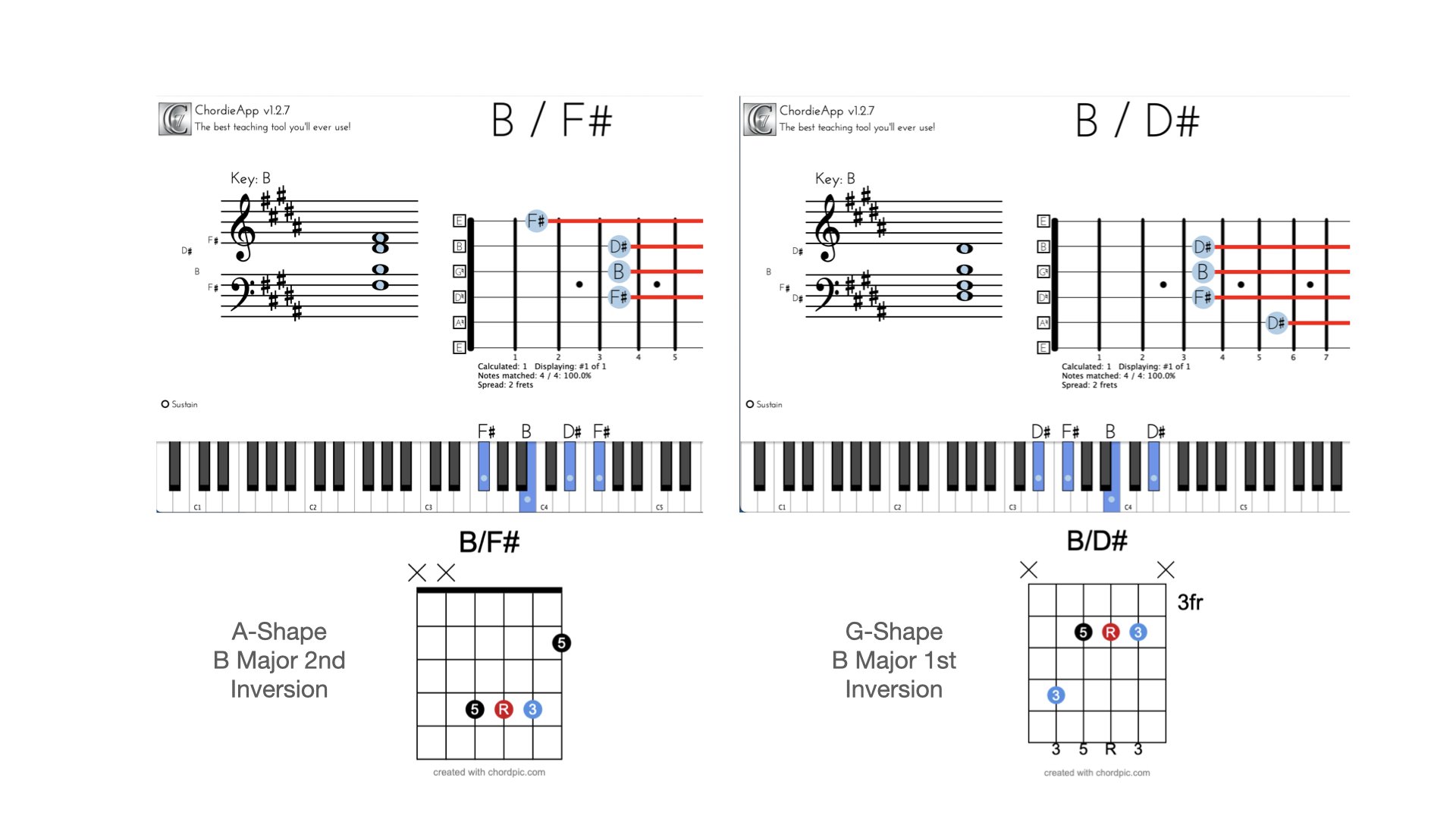
Although this blog is discussing the guitar with the CAGED chords, I will stop short of teaching guitar. There are many resources to access for learning the guitar. But I will put a few links below to one of my favorite online guitar teachers. I really encourage you to explore how chords relate between chord shapes on the guitar.
My favorite thing is when learning a new song (or relearning an old one) is that I will play the chord progression with the Cowboy chords, then move up to the neck to the next root chord position and learn it there. This often helps to add energy to the song as well as opens up possibilities for improvisation.
Closing
So, this article presented the guitar and how chords are built on the guitar and how you can find chord inversions. I really hope this is helpful to discuss this. As I stated above, I do not want to write a blog on how to play the guitar. But, if there is enough interest I will do more on this topic either as a presentation at an MSA meeting, as a video, or a streaming call presentation. I have turned on comments for this blog so just let me know in the comments if you want more and we can gauge the interest.
In the next blog we will really get into the meat and potatoes of why I started this blog series (and why I asked to be on the MSA Board too). We will begin looking at chord progressions at what are the most common major progressions or common minor progressions and what progressions are trending etc. We may even assess how to make a major progression sound less happy or a minor progression less sad. Most importantly, how to find that one passing chord, or substitution chord to take my song to the next level.
Useful Links on the CAGED system


